Thingiverse

8/9 Coil for Microscope by Alvinyeahalvin
by Thingiverse
Last crawled date: 3 years, 1 month ago
Hi everyone!!
OK so it's been a while since I posted anything. Last time i posted those super duper awesome beam-frequency disks for you all, and i hope you played with them to make weird slot patterns like 0[][ ] [] [][ ] [][] [ ] | [][ ] [] [][ ] [][] [ ]360 unique for your purposes. and now i have a COOL attachment for your microscope that i created around the same time (and you can use this for your research to refine the beam freq disks make). HOWEVER - PLEASE NOTE THE SAFETY STATEMENT AT THE BOTTOM
This is a design for an 8/9 coil, meaning that the proportions between the top circle and bottom circle are 9 to 8 ratio. this will essentially cause your field to be directed upwards onto your specimen slide.
This idea came to me after having read several papers indicating that radiofrequencies in the kHz, MHz, GHz and THz frequencies all affect biological systems (ie given RF signals affect different things differently ranging from macromolecules to small molecules production, aggregations, etc), so what better way to view them than changes in morphology (or whatever lol) at a microscopic scale?
Be sure to wind the coil correctly. follow the right-hand rule, so starting at the TOP end of the coil (the bigger circle, the "9" part), start winding downwards toward the 8 part, COUNTERCLOCKWISE, as per the right hand rule the current will flow through your thumb around the circumference, the electric E Field INWARD perpendicular to where the palm of your hand is at the degree of change per thickness X (thickness of wire turn) at the change in degrees of the slant of the side of the plastic, slightly upward onto your slide, and the B field (magnetic field) will follow your curled fingertips up into your slide through the holes (if you're using positive pulses. if youre doing AC itll go back and forth but the way the coils are wound, just do the right hand rule going the other way lol). so yeah. nice litte circuit or a function generator will help you out to get your signal going through your coil, maybe a little high gain transistor circuit to boost the signal or whatever? you know. maybe a little 555 timer for some variable square wave pulses if you dont have a function generator.
Like i indicated - I made this for my microscope. the "8" side circumference was designed to fit MY microscope's lamp down under the stage, and the lip on the "9" end fits ever so snugly just under the stage's inner lip, with a distance of just milimeters between the specimen ON the slide and the uppermost winding of the coil, held in place by the lamp fixture and the stage. if your microscope has a super thick stage, maybe design your own coil, changing the proportions of the top and bottom circumferences to make that angle of change in circumference per winding a little bigger, so the B and E fields can reach your specimen, ya dig?
cooooool. i think thats it.
--SAFETY NOTICE--
SAFETY NOTICE: As cited by those papers ive read, about RF affecting bioogical systems and all, when doing experiments i don't want to be near the microscope lol AND I SUGGEST YOU DO THE SAME. Granted some people for SURE are gonna come in here being like "ohhhh its fine you dont know anything about RF blah blah blah the power isnt high enough" and im like, motherfucker leave that shit on long enough and the space around you starts oscillating LMAO! now idk if youll die, or maybe they're right that the power isn't high enough - i'm a biologist not a physicist, but i won't take my chances if i dont have to. safety first. i wouldn't expose my fingers and face to the stuff i'm projecting onto my specimens. Also I haven't put a reflector plate on my microscope, plus all the waves bounce off everything anyways, just not as many or whatever. REGARDLESS, I hate being around the RFs, but i do love doing my research. I have an awesome microscope eyepiece that connects to my computer via a USB port, and a super cool recording program that allows me to record a certain number of frames per second of my choosing, so its like as if i was looking into the scope, and just recording it onto my computer instead. these things are pretty cheap - but mine came with my scope.. theyre like 40 bucks on ebay like this one
http://www.ebay.com/itm/Cnscope-Microscope-2-0MP-USB-To-PC-Digital-Electronic-Eyepiece-Camera-Video-/221939177193
The one I use is the AmScope MD130. it came with my microscope. my microscope also came with the disk (or the website) with the software to record and view the camera called ToupView. idk if its for Amscope only.
So yeah... leave the room, flip the switch, watch what happens on your computer in the other room, or let it record for 30 sec or however long, 2 mins, 2 hours, whatever your experiment design is - and turn it off, then re-enter the room to look at the data if your computer is in the room or if you cant control it from afar. just my personal advice. i know im gonna get those laserheads comin in here bein like "YOULL BE FINE" but, whatever yo! safety first. lol. its a THEORY anyways, you know what im sayin? LOL. also please don't pump super freaking high amplitude and voltages though these cuz A you dont need that much power and B the FCC might come knockin bein like WTF and youll be like "Idfk some kid Alvin told me to do it" lmfao!
"alvin?"
"yeah, alvin"
so NO i'm not encouraging you to misuse this or break any laws. please read up on your physics and radio before implementing this. END SAFETY NOTICE
--END SAFETY NOTICE--
If you have any questions comments or suggestions please implement them or drop them in the comments. I held my coils in place using masking tape, but hot glue or some other glue or adhesive might work better? Goodluck on your research!!! oh yeah and you prob wont be able to get THz frequencies off this cuz of the wire length lol. oh yeah and i used magnet wire for these coils. i think the green one was 18 gauge and the red one is 30 or something. also drilling holes (or putting htem in the design) at the top and bottom to slide your wire tips through to prevent unwinding might be a good idea instead of just using tape lol.
Goodluck on your research!!!
layers were .2, i think infill was like 10% or 90% sorry i cant remember haha. printed on abs or pla. regular temp. no supports.
OK so it's been a while since I posted anything. Last time i posted those super duper awesome beam-frequency disks for you all, and i hope you played with them to make weird slot patterns like 0[][ ] [] [][ ] [][] [ ] | [][ ] [] [][ ] [][] [ ]360 unique for your purposes. and now i have a COOL attachment for your microscope that i created around the same time (and you can use this for your research to refine the beam freq disks make). HOWEVER - PLEASE NOTE THE SAFETY STATEMENT AT THE BOTTOM
This is a design for an 8/9 coil, meaning that the proportions between the top circle and bottom circle are 9 to 8 ratio. this will essentially cause your field to be directed upwards onto your specimen slide.
This idea came to me after having read several papers indicating that radiofrequencies in the kHz, MHz, GHz and THz frequencies all affect biological systems (ie given RF signals affect different things differently ranging from macromolecules to small molecules production, aggregations, etc), so what better way to view them than changes in morphology (or whatever lol) at a microscopic scale?
Be sure to wind the coil correctly. follow the right-hand rule, so starting at the TOP end of the coil (the bigger circle, the "9" part), start winding downwards toward the 8 part, COUNTERCLOCKWISE, as per the right hand rule the current will flow through your thumb around the circumference, the electric E Field INWARD perpendicular to where the palm of your hand is at the degree of change per thickness X (thickness of wire turn) at the change in degrees of the slant of the side of the plastic, slightly upward onto your slide, and the B field (magnetic field) will follow your curled fingertips up into your slide through the holes (if you're using positive pulses. if youre doing AC itll go back and forth but the way the coils are wound, just do the right hand rule going the other way lol). so yeah. nice litte circuit or a function generator will help you out to get your signal going through your coil, maybe a little high gain transistor circuit to boost the signal or whatever? you know. maybe a little 555 timer for some variable square wave pulses if you dont have a function generator.
Like i indicated - I made this for my microscope. the "8" side circumference was designed to fit MY microscope's lamp down under the stage, and the lip on the "9" end fits ever so snugly just under the stage's inner lip, with a distance of just milimeters between the specimen ON the slide and the uppermost winding of the coil, held in place by the lamp fixture and the stage. if your microscope has a super thick stage, maybe design your own coil, changing the proportions of the top and bottom circumferences to make that angle of change in circumference per winding a little bigger, so the B and E fields can reach your specimen, ya dig?
cooooool. i think thats it.
--SAFETY NOTICE--
SAFETY NOTICE: As cited by those papers ive read, about RF affecting bioogical systems and all, when doing experiments i don't want to be near the microscope lol AND I SUGGEST YOU DO THE SAME. Granted some people for SURE are gonna come in here being like "ohhhh its fine you dont know anything about RF blah blah blah the power isnt high enough" and im like, motherfucker leave that shit on long enough and the space around you starts oscillating LMAO! now idk if youll die, or maybe they're right that the power isn't high enough - i'm a biologist not a physicist, but i won't take my chances if i dont have to. safety first. i wouldn't expose my fingers and face to the stuff i'm projecting onto my specimens. Also I haven't put a reflector plate on my microscope, plus all the waves bounce off everything anyways, just not as many or whatever. REGARDLESS, I hate being around the RFs, but i do love doing my research. I have an awesome microscope eyepiece that connects to my computer via a USB port, and a super cool recording program that allows me to record a certain number of frames per second of my choosing, so its like as if i was looking into the scope, and just recording it onto my computer instead. these things are pretty cheap - but mine came with my scope.. theyre like 40 bucks on ebay like this one
http://www.ebay.com/itm/Cnscope-Microscope-2-0MP-USB-To-PC-Digital-Electronic-Eyepiece-Camera-Video-/221939177193
The one I use is the AmScope MD130. it came with my microscope. my microscope also came with the disk (or the website) with the software to record and view the camera called ToupView. idk if its for Amscope only.
So yeah... leave the room, flip the switch, watch what happens on your computer in the other room, or let it record for 30 sec or however long, 2 mins, 2 hours, whatever your experiment design is - and turn it off, then re-enter the room to look at the data if your computer is in the room or if you cant control it from afar. just my personal advice. i know im gonna get those laserheads comin in here bein like "YOULL BE FINE" but, whatever yo! safety first. lol. its a THEORY anyways, you know what im sayin? LOL. also please don't pump super freaking high amplitude and voltages though these cuz A you dont need that much power and B the FCC might come knockin bein like WTF and youll be like "Idfk some kid Alvin told me to do it" lmfao!
"alvin?"
"yeah, alvin"
so NO i'm not encouraging you to misuse this or break any laws. please read up on your physics and radio before implementing this. END SAFETY NOTICE
--END SAFETY NOTICE--
If you have any questions comments or suggestions please implement them or drop them in the comments. I held my coils in place using masking tape, but hot glue or some other glue or adhesive might work better? Goodluck on your research!!! oh yeah and you prob wont be able to get THz frequencies off this cuz of the wire length lol. oh yeah and i used magnet wire for these coils. i think the green one was 18 gauge and the red one is 30 or something. also drilling holes (or putting htem in the design) at the top and bottom to slide your wire tips through to prevent unwinding might be a good idea instead of just using tape lol.
Goodluck on your research!!!
layers were .2, i think infill was like 10% or 90% sorry i cant remember haha. printed on abs or pla. regular temp. no supports.
Similar models
3dwarehouse
free

Yeah whatever
...yeah whatever
3dwarehouse
sure thing #blah
thingiverse
free

Dremel safety guard by bosonjump2k
... safety guard by bosonjump2k
thingiverse
dremel safety guard. you will need two microscope slides(76.2*25.4mm, 3"x1").
thingiverse
free

NIKON TMD MICROSCOPE STAGE PLATE by Faffie
...part for the glass slide with less tolerance so it will fit in exact so there is no chance of moving during the scanning process.
3dwarehouse
free

Centaur tank (cont.)
...rsion will be called the monster tank. yeah i know lazy name blah blah blah. next will be the turret and the engine being placed.
3dwarehouse
free

spiral rose
...ahblahblahbalhblahblahblahblahbalhblahblah blah, blah. blah . . blah . . . . . . . . . . . . . . . . . . . . . . . .. . . . . . .
grabcad
free

Research Microscope
...research microscope
grabcad
mock up of a research microscope. you need to add your own objectives.
3dwarehouse
free

Wentz Scope
...wentz scope
3dwarehouse
wentz scope with slide/specimen disc - museum microscope #exhibit #microscope #museum #scope #wentz
thingiverse
free

Ford Focus 2.0 PCV valve retainer clip by AndrewGrizzWalters
...39;s not my fault. do your research and take this at your own risk. i printed mine from petg, 245/70 on masking tape. takes 5 min
thingiverse
free

Safety tape knife by gnikeimaj
...fe alternative. this is meant to break they tape so that you can then finish opening by hand so it doesn't have a sharp edge.
cg_trader
free

Low quality sniper scope
... trader
yeah, just like in the title, i do my best. hope you'll enjoy.
after you'll buy it (hope so) fell free to use it
Microscope
archibase_planet
free

Microscope
...roscope
archibase planet
microscope optical microscope
microscope n180314 - 3d model (*.gsm+*.3ds) for interior 3d visualization.
archibase_planet
free
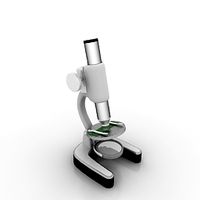
Microscope
...microscope
archibase planet
microscope medical facilities
microscope - 3d model for interior 3d visualization.
archibase_planet
free

Microscope
...microscope
archibase planet
microscope
microscope n031107 - 3d model (*.gsm+*.3ds) for interior 3d visualization.
archibase_planet
free

Microscope
...microscope
archibase planet
microscope laboratory equipment
microscope - 3d model (*.gsm+*.3ds) for interior 3d visualization.
archibase_planet
free
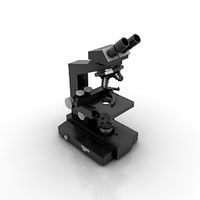
Microscope
...planet
microscope medical apparatus medical facilities
microscope n180608 - 3d model (*.gsm+*.3ds) for interior 3d visualization.
3d_ocean
$16

Microscop Toy
...microscop toy
3docean
game games microscop microscop toy play science toy
microscop model toy with materials
turbosquid
free

Microscope
...pe
turbosquid
free 3d model microscope for download as blend on turbosquid: 3d models for games, architecture, videos. (1607423)
turbosquid
$19

Microscope
...bosquid
royalty free 3d model microscope for download as max on turbosquid: 3d models for games, architecture, videos. (1514032)
turbosquid
$19
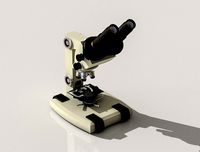
Microscope
...bosquid
royalty free 3d model microscope for download as max on turbosquid: 3d models for games, architecture, videos. (1514017)
turbosquid
$18

Microscope
...bosquid
royalty free 3d model microscope for download as max on turbosquid: 3d models for games, architecture, videos. (1176709)
Coil
3d_export
$5

Tesla coil
...tesla coil
3dexport
detailed tesla coil model
archibase_planet
free

Fan coil
...fan coil unit air conditioning daikin conditioner
fan coil daikin n160915 - 3d model (*.gsm+*.3ds) for exterior 3d visualization.
cg_studio
$20

Coiled Rope3d model
...pe lasso coil bustermk2 coiled cord
.max - coiled rope 3d model, royalty free license available, instant download after purchase.
turbosquid
$8

Tesla Coil
...bosquid
royalty free 3d model tesla coil for download as fbx on turbosquid: 3d models for games, architecture, videos. (1458990)
turbosquid
$29

Mosquito Coil
...oyalty free 3d model mosquito coil for download as ma and obj on turbosquid: 3d models for games, architecture, videos. (1263002)
turbosquid
$2

electronic coil
...y free 3d model electronic coil for download as obj and blend on turbosquid: 3d models for games, architecture, videos. (1503485)
turbosquid
$2
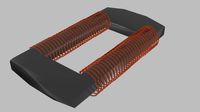
ferrite coil
...alty free 3d model ferrite coil for download as blend and obj on turbosquid: 3d models for games, architecture, videos. (1588248)
turbosquid
$15

Tesla Coil
... available on turbo squid, the world's leading provider of digital 3d models for visualization, films, television, and games.
turbosquid
$10

coil gun
... available on turbo squid, the world's leading provider of digital 3d models for visualization, films, television, and games.
turbosquid
$4

The transition coil
... available on turbo squid, the world's leading provider of digital 3d models for visualization, films, television, and games.
9
3ddd
$1

9
...9
3ddd
консоль
9
turbosquid
$40

Apple iPhone 9 & 9+
...del apple iphone 9 & 9+ for download as max, obj, and fbx on turbosquid: 3d models for games, architecture, videos. (1284550)
turbosquid
$12

Calligraphic Digit 9 Number 9
...hic digit 9 number 9 for download as max, obj, fbx, and blend on turbosquid: 3d models for games, architecture, videos. (1389349)
3ddd
$1

PLANTS 9
...plants 9
3ddd
папоротник , кашпо
plant 9.. hope u all like it
design_connected
$11
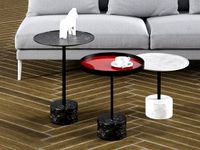
194 9
...194 9
designconnected
194 9 computer generated 3d model. designed by lissoni, piero.
design_connected
free

Tangram 9
...tangram 9
designconnected
free 3d model of tangram 9 by lago designed by lago, daniele.
design_connected
$11

Domino 9
...domino 9
designconnected
zanotta domino 9 computer generated 3d model. designed by progetti, emaf.
design_connected
$20
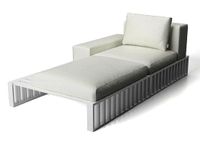
Docks 9
...docks 9
designconnected
gandia blasco docks 9 computer generated 3d model. designed by romero vallejo.
3d_export
$80

mq-9
...mq-9
3dexport
3d_export
$6
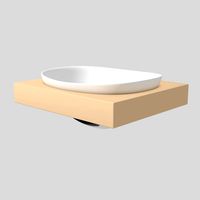
washbasin-9
...washbasin-9
3dexport
8
turbosquid
$6

Rock 8-8
...urbosquid
royalty free 3d model rock 8-8 for download as obj on turbosquid: 3d models for games, architecture, videos. (1659393)
3ddd
$1
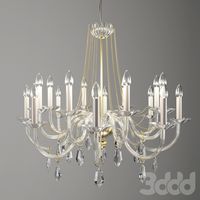
Italamp 387/8+8
...italamp 387/8+8
3ddd
italamp
люстра italamp 387/8+8
размеры 92x71h
3ddd
$1

8 марта
...8 марта
3ddd
8 марта
кресло 8 марта
design_connected
$16
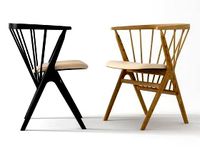
No 8
...nected
photo-realistic 3d models of the sibast no 8 armchair from sibast for 3d architectural and interior design presentations.
3d_export
$5

hinge 8
...hinge 8
3dexport
hinge 8
3d_export
$5

iphone 8
...iphone 8
3dexport
iphone 8
turbosquid
$69

iPhone 8 and iPhone 8 Plus
... free 3d model iphone 8 and iphone 8 plus for download as max on turbosquid: 3d models for games, architecture, videos. (1202442)
turbosquid
$12

Calligraphic Digit 8 Number 8
...hic digit 8 number 8 for download as max, obj, fbx, and blend on turbosquid: 3d models for games, architecture, videos. (1389341)
3ddd
free

PLANTS 8
...plants 8
3ddd
цветок , горшок
plant 8,,, hope u all like it
3ddd
$1
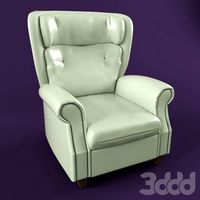
8 Марта / Amadey
...8 марта / amadey
3ddd
8 марта
8 marta amadey

